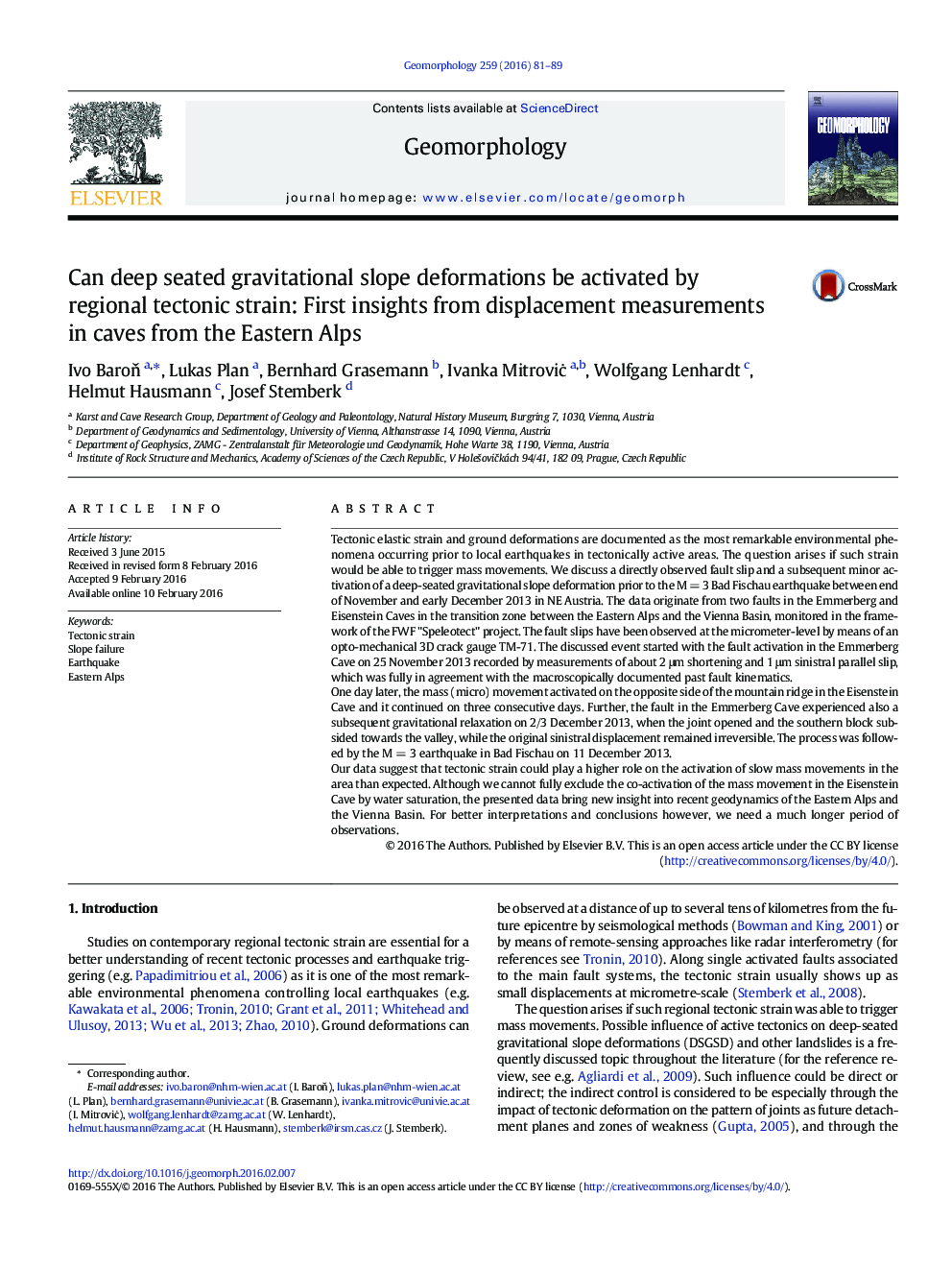| کد مقاله | کد نشریه | سال انتشار | مقاله انگلیسی | نسخه تمام متن |
|---|---|---|---|---|
| 6431620 | 1635390 | 2016 | 9 صفحه PDF | دانلود رایگان |
- 3-D measurements at a μm level recorded an active-tectonic slip along an active fault
- Subsequently a mass movement was activated one day later in nearby DSGSD
- It happened 13 days prior to the nearby 2013-12-11Â MÂ =Â 3 Bad Fischau earthquake
- It suggests that tectonic strain can play a direct role in the activation of landslides
- This could be crucial for unstable masses transformable into catastrophic failures
Tectonic elastic strain and ground deformations are documented as the most remarkable environmental phenomena occurring prior to local earthquakes in tectonically active areas. The question arises if such strain would be able to trigger mass movements. We discuss a directly observed fault slip and a subsequent minor activation of a deep-seated gravitational slope deformation prior to the M = 3 Bad Fischau earthquake between end of November and early December 2013 in NE Austria. The data originate from two faults in the Emmerberg and Eisenstein Caves in the transition zone between the Eastern Alps and the Vienna Basin, monitored in the framework of the FWF "Speleotect" project. The fault slips have been observed at the micrometer-level by means of an opto-mechanical 3D crack gauge TM-71. The discussed event started with the fault activation in the Emmerberg Cave on 25 November 2013 recorded by measurements of about 2 μm shortening and 1 μm sinistral parallel slip, which was fully in agreement with the macroscopically documented past fault kinematics.One day later, the mass (micro) movement activated on the opposite side of the mountain ridge in the Eisenstein Cave and it continued on three consecutive days. Further, the fault in the Emmerberg Cave experienced also a subsequent gravitational relaxation on 2/3 December 2013, when the joint opened and the southern block subsided towards the valley, while the original sinistral displacement remained irreversible. The process was followed by the M = 3 earthquake in Bad Fischau on 11 December 2013.Our data suggest that tectonic strain could play a higher role on the activation of slow mass movements in the area than expected. Although we cannot fully exclude the co-activation of the mass movement in the Eisenstein Cave by water saturation, the presented data bring new insight into recent geodynamics of the Eastern Alps and the Vienna Basin. For better interpretations and conclusions however, we need a much longer period of observations.
Journal: Geomorphology - Volume 259, 15 April 2016, Pages 81-89
